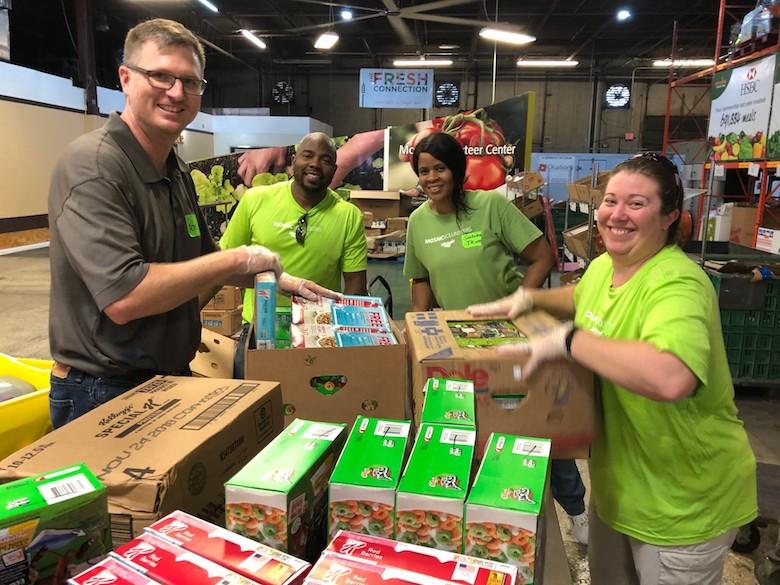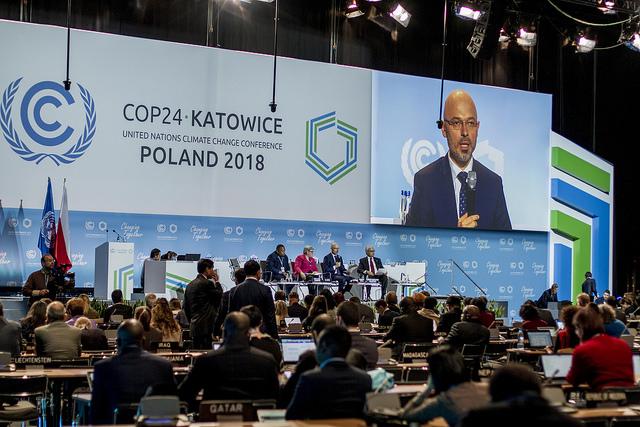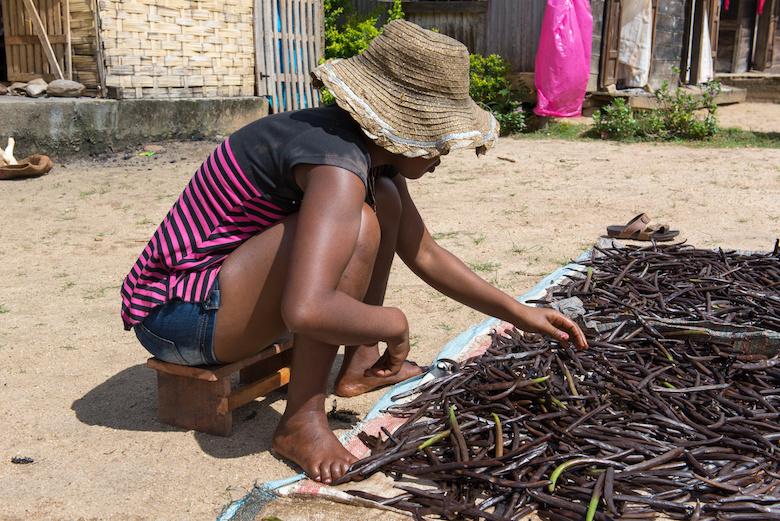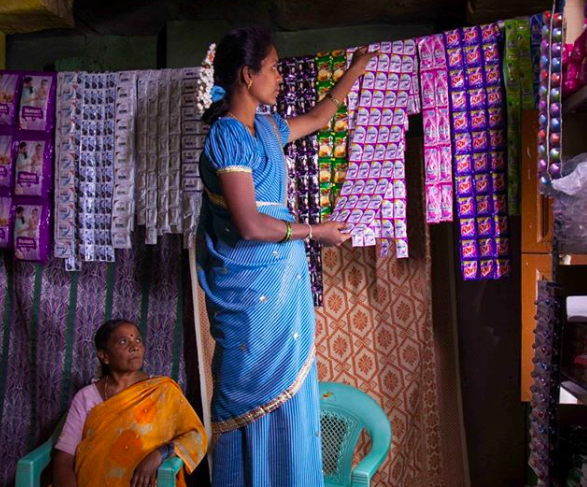Hydrogen Skeptics Be Warned - Hyundai Has an H2 Vision


Electric vehicles are taking the world by storm, but there is already trouble on the horizon. Hydrogen fuel cell electric vehicles (often referred to as FCEV) are beginning to compete for the hearts and minds of the motoring public.
In the latest development, earlier this week Hyundai Motor Group announced a roadmap for the hydrogen powered future it’s calling “FCEV Vision 2030.”
The Hyundai FCEV Vision 2030
Hyundai, which includes the Kia brand, is not messing around. The company plans to “drastically boost its annual fuel-cell systems production capacity by 2030” while also partnering its fuel cell technology with other auto companies as well as drones, ships, railway engines and, of course, forklifts.
Why forklifts? That’s a good question. The warehouse logistics sector has been among the early adopters to switch from batteries to fuel cells, considering it must have zero emission vehicles for indoor work.
Fuel cells win out in two key areas: time and space.
Automobiles powered by fuel cells can be refueled as quickly as an those with an internal combustion engine, so warehouse operators aren’t stuck with racks of batteries waiting to be charged. Without the need for a battery room, warehouse operators can use that space for other needs.
Power generation and energy storage are two other growth areas that Hyundai expects to see.
It’s a hydrogen society, we just live in it
Like Toyota, Hyundai is looking at hydrogen as a holistic solution to 21st-century energy needs. Here’s the money quote from Euisun Chung, Executive Vice Chairman of Hyundai Motor Group:
“Hyundai Motor Group, the global pioneer of the commercial production of FCEV, is taking a bold step forward to expedite the realization of a hydrogen society We are confident that hydrogen power will transcend the transportation sector and become a leading global economic success.”
Hyundai is also keeping a close eye on the competition. If all goes according to this FCEV Vision 2030 plan, Hyundai will ramp its FCEV production up to 500,000 units per year by 2030. That should be enough to keep Hyundai in the running for a leader in global production, which the company calculates will reach 2 million units yearly by 2030.
Other elements of FCEV Vision 2030 include a second fuel cell manufacturing plant in Chungju, South Korea and the splashy launch of Hyundai’s second-generation NEXO model.
One thing holding back the FCEV auto market is high cost relative to battery EVs and conventional automobiles. Hyundai, though, anticipates that improvements in fuel cell technology will help bring down the true cost of ownership (the cost of the vehicles plus lifetime fuel and maintenance costs).
Oh, no! Not again!
If this sounds like deja vu all over again, you’re onto something.
When automotive transportation first burst upon the scene in the late 19th century, electric cars were the mode of choice. Unfortunately the heyday of the battery was short lived. Petroleum-fueled engines soon beat them out on cost and convenience, and the rest is history.
So, now that battery EVs have gotten another chance, are they going to blow it again?
In other words, will hydrogen vehicles eventually push out battery EVs? Fortunately for battery fans, the answer is probably no.
Battery technology has improved (to put it mildly) since the 19th century, meaning greater range at less cost. Just as importantly, opportunities to charge an EV are more widespread and convenient. Even up through the 1930’s, many rural communities across the U.S. had no electricity.
Clean energy is yet another factor favoring battery technology. Not long ago, EVs in the U.S. were likely to be charged with electricity from coal-fired power plants unless hydropower was available. Fossil fuels are still part of the picture, but solar and wind power are beginning to join hydropower as significant sources of electricity within the national grid mix.
Speaking of fossil fuels, that’s also an issue for fuel cell vehicles. Most hydrogen is currently sourced from fossil natural gas.
Fortunately, clean tech is cleaning up the fuel cell landscape, just as it has been tidying up battery EVs.
The key development is using an electrical current to “split” hydrogen from water, with the electricity sourced from renewables like wind or solar power.
Image credit: Hyundai.
The Year Wall Street Got Sustainable Investing


2018 is beginning to look as though it may be the year in which not just we, but the world, starts to appreciate the remarkable impact from the very existence of our field.
On October 23, 2018, the Financial Times published an article stating that Larry Fink, CEO of the world’s largest asset manager, BlackRock, had announced that “sustainable investing will be a core component for how everyone invests in the future.” He further explained that sustainable investing did not lead to lower returns and that in his own opinion such a strategy will lead to higher returns.
The news story was of particular interest to me for two reasons. First, there was the fact that my field, so long considered a tiny outlier in the field of finance, had survived to become the declared future of financial asset management by someone whose efforts to build my field were not notable a decade ago. Second, was the use of “Sustainable Investing” rather than “Environmental, Social and Governance (ESG),” which most big banks and asset managers are more comfortable using.
In my opinion, Mr. Fink’s statement means that we early advocates have convinced the world of the need for adding "people and the planet" into our way of investing, and it means that the world’s most conventional asset manager doesn’t need an academic catch phrase to hide behind. Larry Fink is okay with saying the word sustainability. Simply acknowledging that making money at the cost of losing our planet is unsustainable is an extraordinary step forward for the masters of Wall Street.
He isn’t alone. My local CFA Society in Boston just invited me to register for the Sustainable Investing Seminar. It is being led by Jeremy Grantham, the co-founder of Grantham Mayo Van Oterloo, only one of the largest asset managers in the world. He is quoted on my invitation as saying, “We are racing to protect more than our portfolios from stranded assets and other climate change impact…But for those portfolio managers who happen to be human, we have a much more important job. We are racing to protect not just our portfolios, not just our grandchildren, but our species. So get to it.”
These men are the sort of advisors who used to say to me, “Look, I agree with you about all that important stuff, it’s just that I have to keep blinders on and look only for profit or I am letting my clients down.” It was an easy out, and it got dangerous. In October 2008 the Department of Labor (DOL) altered the language guiding fiduciaries. I underline the new words they used. “The named fiduciary must carry out this responsibility solely in the participants’ and beneficiaries’ interest in the economic value of the plan assets…” In other words, it is okay to kill off the beneficiaries if you protect the plan assets. Late in 2016 the DOL reverted to the prior language after eight years of efforts by my industry to keep people in the standards that fiduciaries consider.
The above example demonstrates what a small tweak in language can lead to – it can change the entire mission from protecting people to protecting money. It also demonstrates the importance of conventional investment managers shouldering responsibility for people. I say this because only when my industry was joined by many conventional asset managers – complaining that they were being locked out of tremendous clients demand for green venture capital – did the DOL reverse the language.
To be sure, the outcomes have been there all along, but now they are more clearly the direct result of our existence and of nothing else. In Domini Impact Investment’s Impact Report we name a few. We point out that in 2016 the sustainable Stock Exchanges Initiative found that 58 stock exchanges, representing over 70 percent of listed equity markets have made a public commitment to advancing sustainability. Would that have happened without investors asking for information about social and environmental impacts? We note that in 2017 the United Nations program, Principles for Responsible Investment, published a model tax policy that aligns the company’s business and sustainability strategies. Would the United Nations have noticed this intersection without our efforts to bring it forward? To download our full impact report, with many more examples, visit this site – https://www.domini.com/2017impact
The large accounting firm, KPMG, in their survey of 2017 corporate responsibility reporting The Road Ahead evaluated sustainability reporting from 4,900 companies in 49 countries and regions. It is inconceivable that this type of reporting would have come into ordinary practice were it not for small investors, seeking to align their own values with the way they invest, who gathered together into a handful of mutual funds and managers that carried and championed the message.
KPMG found some major emerging trends within corporate responsibility reporting. They found that companies now agree that climate constructs a financial risk and are reporting on it. Even those that do not admit the risk increasingly report on carbon reduction targets. Companies report on progress towards meeting the United Nations’ Sustainable Development Goals. Companies report on their efforts regarding human rights. KPMG also notes that 78 percent of the largest companies now integrate financial and non-financial data into annual financial reports, suggesting that they view the information as relevant to the investment decision-making process.
This all matters because we know that data creates knowledge and that knowledge creates solutions. If we did not know that seat belts save lives, we would not have legislated seat belts into our automobiles. If we did not know that chewing on lead lowers a child’s IQ, we would still be making toy soldiers out of lead. Investors who care about universal human dignity and ecological sustainability understand that in order to construct a frame within which capitalism works with us, we must first have good data. There are other stakeholders who want good data, but only those who own the companies have demonstrated the clout to demand it. We demand it when we ask non-traditional questions of management and when we compile our results and display them to management, helping each company see in which areas they are stars and in which areas they are laggards.
The field has come of age. The question before us now is whether, in light of the many major investment firms embracing our message, we stay vigilant in the field’s purpose: using finance to save people and the planet. Our voice is needed, for without it, investing in people and the planet will become jargon, without impact.
Previously published on Green Money Journal.
Act Now for Sustainability! Should Companies Be Activists?


Should companies also be activists for system change?
Sustainability is one of two things; it is either:
- doing the same things very differently, or;
- doing very different things.
To use a metaphor, a farmer that grows crops in a field relies upon productive soil. Their use of inputs, irrigation and planting regimens will have an impact upon the quality and quantity of soil in their field. However, the soil in that field is also affected by factors outside the direct control or influence of that farmer: surrounding land use and catchment management, use of chemicals on neighboring fields, development plans and incentives for building houses, trends in gardening of nearby houses. . . . The list goes on forever.
No change without change – the case for corporate activists
If the farmer wants to protect the health and integrity of the soil in their own field, they must engage with the factors, factions and actors outside their farm which can impact upon them.The same goes for companies seeking sustainability; they can improve their own performance to the extent that they can exert control and influence across the value chain, but they won’t actually achieve anything resembling true sustainability unless they also act to influence and stimulate sustainable change outside the company.
This is where the concept of corporate activism comes in: just what are the expectations, limitations and challenges that companies should consider when they undertake activism?
The 2018 Trust Barometer Survey from Edelman highlights that consumers are increasing their expectations of companies to undertake activism in social and environmental dimensions.
Edelman found that:
- Trust in companies headquartered in the U.S. has dropped five points from 55 to 50 percent just in the last year, after having already fallen from 61 percent in 2014.
- 64 percent of respondents agree that CEOs should take the lead on social change, rather than waiting for government to impose it.
- 79 percent of U.S. employees trust their employers to do what is right.
The distinction between activism and other corporate advocacy activities is not entirely clear.
Some examples of companies acting like NGOs are Dell, leading the NextWave ocean plastic campaign, Ben & Jerry’s work on Climate Justice and Patagonia’s actions to support legal challenges to threats to U.S. National Parks.
These might be considered “positive” activism or even “social justice activism.”
However, it is worth remembering that companies are politically active all the time, and those of us involved in sustainability and responsibility may perceive many of these activities as being either positive or problematic, indicative of the use of power for political ends.
Examples of the types of activities in which companies may be involved include:
- Political donations – a very traditional activity for which various corporate reporting regimes require transparency of disclosure (the Institute for Business Ethics has produced a set of useful guidelines for best practice in this area).
- Lobbying – through the development of relationships with politicians, influencing policies and actions designed to amend, alter or remove existing regulation.
- Secondments, staff donations and secretariat funding – in the United Kingdom, there are often secondments from companies to governments as well as in-kind support or contributions, such as the provision of secretariat functions.
- Public relations activities – designed to support particular interests, which might include sponsoring public and academic research, surveys and driving editorial.
- Sector and business body membership – can have a powerful influence on policy formation, either for “good” or “bad.”
- Support for activist groups – this can be seen in two ways: first, as “astroturfing” – where companies support the formation of groups that appear to be community or NGOs but actually serve to perpetuate a view of primary value to corporate interests; and alternatively, where the private sector provides funding for NGO campaigns or through wider partnerships between profits and not-for-profits.
- NGO and collective action platforms – e.g. membership of organizations and initiatives which develop joint position statements to encourage change or new legislation – a good example of this was the CEO statement on climate change.
- Partnerships for change – not political per se, but perhaps one of the original examples of this was WWF and B&Q’s partnership for sustainable forestry – which lead to the formation of the Forest Stewardship Council.
A thin line between activism and lobbying?
Is it only good activism if we agree with its goals or they align with our own agendas?Perhaps the distinction is between activism for private gain versus activism for the public good (which may also include private gain).
In addition, the definition of what constitutes “political” action may well be worth exploring – is something political when it involves engagement or targeting of political processes – or instead, when it focuses upon stimulating social change and evolving social norms?
If activism happens all the time – how do we judge it?
Companies launch activities all the time which are designed to further and protect their interests. Is this a negative? Certainly not, under the current imperatives and rules of modern capitalism. In fact, many would argue that this is their only legitimate priority.However, is consistent self-interest likely to achieve a sustainable world?
I think it’s unlikely.
The examples noted above of companies taking activist positions, which would traditionally have been those of NGOs or other pressure groups, are doing so because they believe that a moral social or ecological wrong exists and that they believe it is positive to be involved in addressing that wrong.
Assessing activism – logically aligned or strangely divergent?
There is also the question of alignment with a company’s activities impacts and legitimate interests. In my opinion, activism that has no logical connection to the business just reminds me of old-school charity giving or philanthropy.This is clearly not unconnected with their own self-interest, but it is not clear whether they are simply trying to signal their selfless behavior or whether they are prepared to act against their own interests if they feel it is morally right to do so.
In order to check alignment or congruence with the business, it might be worth asking the following questions of corporate activities outside the sphere of direct sustainability management could include the following:
- Focus and brand cohesion – does it relate to material sustainability issues, corporate priorities or business impacts?
- Brand value and outreach – how does a project relate to environmental or social issues that have a clear, defendable, link to the company’s brand perception or explicit values?
- Sector issues – does this project address an issue common to and shared across the company’s sector?
- Creating enabling conditions – does the project or activity focus upon a systems level challenge that is preventing, or even slowing, the move towards a sustainable equitable economy?
- Social capacity, value chain – does the project develop the capacity of a producer or producing region to generate or retain higher value from their activities?
- Societal capacity – does the project invest in or contribute to the capacity of existing or potential customers in terms of education, access to resources and services and economic capacity?
- Social cohesion/ economic capability – can this project improve the ability of a producing or manufacturing community to generate income, or enhance the economic capacity of disadvantaged groups?
- Innovation and added value – is there the possibility of adding to the supply of new products or added value products?
- Standards development/ testing – does the idea provide insight into the use, applicability and utility of sustainability standards of possible wider application?
Towards Common-Self interest
Ultimately of course, within the relevant laws, there are many shades of legitimate and desirable behavior. However, if we are truly interested in encouraging and supporting companies to play a role in developing a sustainable world, then we should also be interested in those which undertake activism to address or respond to clear social and ecological challenges.The idea of “common-self-interest” is a useful one for guiding corporate activism.
Companies seeking to assess the legitimacy of their activism should ask themselves the following question: “Is this activism clearly for the common good - even as it also delivers private benefits for us?”
Originally posted on the terrafinity blog.
Image credit: Patagonia blog
Mosaic’s Personal Mission to Combat Food Insecurity


Food is essential to life and necessary for healthy and secure communities. But around the world, millions of families don’t have enough food (or the right food) to live active and healthy lives. There are over 800 million hungry or food-insecure people in the world, including 41 million -- nearly one-in-eight -- in the United States.
Figures like these are hard for most of us to imagine or connect to, but it’s easy to see how far-reaching – and how pressing – the issue of food insecurity is. So pressing, in fact, that Zero Hunger is one of the United Nations Sustainable Development Goals. Eradicating global hunger by 2030 will be a massive undertaking, but one to which Mosaic is proud to contribute.
At The Mosaic Company, food security is on our minds every day, as it’s rooted within our mission to help the world grow the food it needs. The products Mosaic produces directly improve food security by helping farmers in 40 countries around the globe increase crop yields. When it comes to growing enough food for a rising global population, healthy soils are paramount—and often overlooked.
Crop nutrition is responsible for up to 60 percent of food that’s grown. Every time a crop is grown and harvested, nutrients are taken from the soil—and those nutrients must be replaced in order to continue producing food, feed, fuel and fiber crops. Potash and phosphate fertilizers make a vital contribution to healthy, productive soils by providing the nutrients all plants need for growth, both from a volume standpoint and a healthful crop standpoint.
Community investments
But if all that food the world grows does not get to everyone who needs it, there’s a missing connection. Mosaic ties this approach together through community investments with food security as a pillar focus, concentrated in the areas of local hunger relief; agricultural research and education; and global agricultural development. As a global leader in crop nutrition, we feel it is our responsibility to bring our financial resources, expertise and an innovative spirit to the table, helping the world get the food it needs through strategic partnerships with innovative organizations.
Local hunger relief
When we choose the organizations we support, we are considering the issue of hunger from the perspective that food has multiple touchpoints from production to delivery, and it’s only when all are supported that we can reach as many food insecure families as possible. Food shelves, school backpack programs and hot meal sites serve food directly to people needing better access to food. It’s the small organizations and local chapters of nonprofits that know their unique communities best. Mosaic provides funding to organizations like these whose work is critical to addressing hunger in the communities where we have operations.
Global agriculture
Our work addressing food insecurity through community investments is not limited to the local level. In a partnership led by Mosaic, the Sehgal Foundation and The Mosaic Company Foundation have helped empower small holder farmers (those with less than 25 acres) in India not only produce higher yields, but increase household income as a result. You can read more about this partnership, called Krishi Jyoti, in this article of the series.
A call to action
The reality is, food insecurity is complex – more than this essay’s 600-or-so words could ever do justice. Systemic hunger is a social, physical and economic issue that affects over 800 million people in the most personal way. We are proud of our mission and the work we are doing to address hunger globally, and in our operating communities, working alongside many other organizations who are similarly convicted. Solving this problem, or at least beginning to, will require significantly more effort and resources from public and private sectors.
Image: Courtesy of The Mosaic Company
Soy (Hopefully) Won’t Become the Next Palm Oil: Here’s Why


Representatives of Brazil’s soy industry, local NGOs and nearly two dozen large international companies are rounding the corner in an agreement to incentivize Brazilian soy farmers to end, or at least severely scale back, deforestation across the all-important Cerrado. Instead of continuing their deforestation efforts to maximize crop yields (and thus profits), farmers would be paid by the coalition to use the Cerrado land they have already converted to pasture land.
Brazil’s soy industry, advocated through its trade associate ABIOVE, teamed with Brazilian NGOs to form the Cerrado Work Group (GTC, its Portuguese acronym) in 2016 to fight the rising rates of deforestation in the ecologically rich Cerrado. Together, they published the Cerrado Manifesto, casting a net for greater conservation action and getting bites from the likes of McDonald’s, Unilever, Tesco and a host of other international retailers as well as major players in the meat and soy industries.
These companies signed a statement of support, and the GTC set a lofty goal of getting an agreement in place by the end of 2018. As 2018 draws to a close, it had appeared that the odds that a deal could be worked out were slim - but now, hope remains.
The GTC and the international companies have made great headway recently, devising a strategy hoping to once and for all incentivize farmers to wean away from deforestation as a means to increase their business. To no surprise, the barrier has always been financial. Why should a farmer not expand his or her pasture land and sacrifice the opportunity to make money, particularly when his or her neighbors are getting ahead using the same environmentally unsustainable practices? Why should the farmer care about the future consequences of depleting the Cerrado when he or she needs to feed his or her family tomorrow?
The group’s developing agreement aims to defy these questions by providing farmers with cash incentives to not sprawl further into the Cerrado. Under the terms of the agreement, the international companies would pool their money to create an incentives package - and ABIOVE’s decision to match the contributions would only sweeten the pot. Environmental NGOs would then be tapped to help expand this fund by encouraging various stakeholder groups and impact investors, who have long sought such a collaboration, to chip in.
NGOs would then target farmers and assist in properly implementing this incentives package. They would likely also be tasked with monitoring companies’ supply chains, ensuring deforestation doesn’t crop up in any forms along the chain.
The benefits would extend to all levels. Farmers’ wages remain steady while they don’t incur neither the financial cost nor physically backbreaking toll of deforestation. Soy traders nudge closer to achieving their deforestation commitments. The international companies investing in this incentive receive a lifetime of kudos for their historic preservation efforts. And, as The Nature Conservancy puts it, “Fast Moving Consumer Goods companies would get to meet their promise to consumers who increasingly see soy as the next palm oil.”
The biggest winner, however, is all of us. The Cerrado is immeasurably important - with its size larger than the United Kingdom, France and Germany combined, this region, a mixture of savanna, woodlands and forest, is home to more than 10,000 plant, 900 bird and 300 mammal species. The Cerrado’s paramount size absorbs and sequesters much of the world’s carbon and its preservation, along with Brazil’s Amazon, can significantly slow down climate change.
But the Cerrado has also been the textbook example of the adverse effects associated with agribusiness. Laws and regulations in the rainforest have pushed former Amazon opportunists to seek solace in the vaguely regulated Cerrado, where they have moved fast to develop it at a financial gain.
The Nature Conservancy says that beyond taking crucial steps needed to preserve the Cerrado, this agreement would provide an example where collaboration between the private sector and other key stakeholders could benefit the environment at no cost to the potential business gains.
The article reads (to be read, as I see it, in an inspiring tone):
More than anything, it would be proof that emerging market countries like Brazil do not face a zero-sum choice between development and conservation: there is a middle way. The ball is in the private sector’s court now. Let’s hope that everyone, across the supply chain, understands the scale of the opportunity we have in the Cerrado. Quite simply, it would be the biggest thing anyone could do in the deforestation space right now. It’s time for all the market actors to step up and make this vision a reality.Considering Brazil’s current political climate, it would be positive step forward to ring in the new year with a toast of champagne, celebratory “2019” glasses and finally, optimism that the GTC and international companies have put their money where their mouths, at the moment, appear to be when it comes to the Cerrado .
Image credit: David Stanley/Flickr
Investors Managing $32 Trillion Demand Climate Action


If world leaders leave the COP24 global climate negotiations this week in Katowice, Poland without putting teeth into the goals of the Paris Agreement, a record 415 investors managing $32 trillion are among those predicting dire consequences. Investors are increasingly worried not only about the state of the planet but of the global economy if climate action continues to move at a glacial pace.
Among the demands outlined in the 2018 Global Investor Statement to Governments on Climate Change is to phase out thermal coal, set a price on carbon emissions and end fossil-fuel subsidies. If no action is taken, and the world warms by 4 degrees Celsius (7.2 degrees Fahrenheit), the outcome would be $23 trillion in global economic losses over the next 80 years, investors warned.
“This is permanent economic damage three or four times the scale of the impacts of the 2008 Global Financial Crisis, while continuing to escalate,” the group said in the statement. “Much more needs to be done by governments to accelerate the low-carbon transition.”
Pressure is on in Poland
The Paris Agreement, signed in 2015 by 195 countries, calls for holding the increase in the global average temperature to well below 2°C above pre- industrial levels and to pursue efforts to limit the temperature increase to 1.5°C above pre-industrial levels.It was the first-ever universal, legally binding climate deal. The Trump administration announced last summer that the U.S. would leave the agreement, although that will take some years to be fully in effect.
The 24th Conference of the Parties (COP24) to the United Nations Framework Convention on Climate Change (UNFCCC) is the deadline agreed by countries to decide how they will implement the Paris Agreement.
“Without success in Katowice there is no success of Paris,” said Poland Secretary of State H.E. Michal Kurtyka and President of COP24 as the event opened.
Uncertain prospects for success
Yet the prospect of achieving that goal seems to be diminishing for every passing day as the negotiations near their conclusion this Friday. And among those most worried are investors.“We are concerned that the implementation of the Paris Agreement is currently falling short of its agreed goal,” the group of investors, including Allianz SE, HSBC Global Asset Management and Schroders Plc said in the statement. “There is an ambition gap . . . [that] would lead to an unacceptably high temperature increase that would cause substantial negative economic impacts.”
Climate change, they insisted, needs to be addressed “with urgency. It is vital for our long-term planning and asset allocation decisions that governments work closely with investors to incorporate Paris-aligned climate scenarios into their policy frameworks and energy transition pathways.”
And the investors underscored a point they’ve made before, as reported by TriplePundit: they need companies to report reliable climate-related financial information to price climate-related risks and opportunities most effectively.
Create value instead of inviting disaster
“The reality is that the long-term nature of the challenge has, in our view, met a zombie-like response by many,” Chris Newton, Executive Director Responsible Investment of IFM Investors said in the statement. “This is a recipe for disaster as the impacts of climate change can be sudden, severe and catastrophic.”Investors would clearly not like to see $26 trillion in economic benefits slip away if negotiations in Katowice fail to rally world leaders to act. That’s the figure that emerged earlier this year from the Global Commission on the Economy and Climate, outlining the economic benefits of a global shift to a low-carbon economy.
“The transition to a low-carbon economy presents numerous opportunities to create value, and investors who ignore the changing world do so at their own peril,” said New York State Comptroller Thomas P. DiNapoli. The comptroller represents the New York State Common Retirement Fund, which manages $207 billion in assets - and is one such fund joining the 415 investors urging more forceful action.
Image credit: UNFCCC/Flickr
How General Mills Sustainably Sources Food Ingredients from Around the World


To produce enough food to feed an increasingly hungry world, we must take care of the people who are raising the crops as well as the land, water and air needed for them to thrive. As a global food company that relies on ingredients from around the world, we pay careful attention to the impact of agriculture on our environment and the ability of farmers to be successful.
We know consumers are increasingly interested not only in where their food comes from but how it is grown and by whom. We share consumers’ desire for transparency about what goes into our products. To create supply chain resiliency and enable growth, we need to protect and conserve the raw material base our business depends on.
And we believe passionately that we can use General Mills’ size and scale for doing good. ‘Treating the World with Care’ is one of our key corporate pursuits and something that’s long been in our company DNA.
Commitment to sustainable sourcing
For these reasons, we made a commitment in 2014 to sustainably source our top ten priority ingredients by the end of 2020. These commonly used ingredients, which represent more than 40 percent of our annual raw material purchases, include cocoa, vanilla, oats, wheat, sugar beets, corn, milk, sugarcane, palm oil and fiber packaging. By the end of fiscal 2018, 85 percent of the raw materials outlined in this commitment were sustainably sourced.
Hurdles remain, but we continue making progress toward our 2020 goal. To get there, we focus on improving the environmental, social and economic impacts of sourcing our top ten raw material ingredients. This helps ensure availability of the categories we need to make our products and aligns with our core values. It also helps us meet our consumers’ growing desire to understand the link between the food they purchase and its origin.
As you may imagine, the challenges faced by cocoa farmers in West Africa vary drastically from the issues that are more prevalent with wheat farmers in Kansas or oat growers in Canada. We source raw materials from around the world and as such, tailor our sustainable sourcing strategies to address different risks and opportunities. We’ve utilized three key strategic approaches: Origin-direct investment, continuous improvement and verification.
Origin-direct investment
We source cocoa through supplier partners who procure it from smallholder farmers in Côte d’Ivoire, Ghana and Nigeria and similarly, vanilla from Madagascar. We know that when farmers can earn a good living and take care of the local environment, their lives are better and their communities are more stable. That’s why we invest in these farmers and their communities – to improve livelihoods and the sustainability and quality of our ingredients. Learn more about how we are improving the sustainability of vanilla grown in Madagascar and of cocoa grown in West Africa.
Continuous improvement
Row crops and dairy are undoubtedly among the most resource intensive of our 10 priority ingredients. To source these raw materials sustainably, we measure the progress of farmers’ raw material and natural resource efficiency, including energy use, greenhouse gas emissions, water quality and water irrigation use, soil conservation, soil carbon and land use. The data gathered from these measures allows us to work with farmers to drive continuous improvement over time in our North American supply chain. Learn more about how we are increasing the sustainability of Canadian oats and U.S. wheat, corn and sugar beets.
For milk, we work with farmers and dairy cooperatives to collect data and calculate sustainability impact from the farm to our production facility. Then we meet to review results and discuss how to make improvements in areas like crop production, animal feed and manure management to reduce our greenhouse gas (GHG) emissions and other environmental impacts.
Verification
We continue to increase the sustainability of fiber packaging, sugarcane and palm oil by working across the industry to improve practices, expand value chain transparency and validate progress. Challenges in these supply chains range from the risk of deforestation associated with fiber packaging to the rights of workers helping to grow and harvest sugarcane and fresh palm fruit bunches. Currently, more than 99 percent of the fiber packaging, 58 percent of the sugarcane and 100 percent of the palm oil we purchase is sustainably sourced.
We continue to collaborate with farmers, suppliers and other partners to refine our approach as we seek to more sustainably source the raw materials we use in food production and packaging. For example, to drive progress toward our 2025 goal to reduce GHG emissions, we are increasingly looking at our full global raw materials purchasing through a climate lens. For example, we’re leveraging our existing North American continuous improvement engagements for row crops as a springboard to help famers understand and accelerate adoption of regenerative agriculture practices that store and increase soil organic carbon as well as a host of other sustainability benefits.
We know that using limited resources and natural systems in a smarter and more efficient manner is essential to feeding a growing population and lightening our impact on the planet. Learn more about our sustainable sourcing efforts, the results we have achieved to date and next steps in our journey.
Image: AdobeStock/Kriss75
2019 Food Trends Include Fish-Free Tuna, Mushroom Jerky and BYOVB


It’s the time of the year when everyone is looking ahead at what the New Year will bring. Whole Foods Market recently released predictions for the top food trends of 2019, as selected by the retailer's team of global buyers and experts.
Many of the 2019 food trends are related to responsible and sustainable sourcing, from production to packaging. Here’s a closer look at three of these trends.
Eco-packaging
“Some movements start as trends, then become necessities. This is one of them,” says the Whole Foods press release announcing 2019’s top trends.
Certainly, sustainable packaging is quickly becoming more and more of a necessity, as single-use plastics continue to take their toll on the environment.
Dozens of food and beverage companies have joined the OSC2 Compostable Packaging Collaborative to make important advances in flexible product pouches.
The company LunchSkins helps consumers stay sustainable when repacking their groceries in their lunchboxes, with reusable bags (each one replacing 500 plastic bags) and plastic-free recyclable paper bags for sandwiches and snacks.
Whole Foods is continuing to make their in-store packaging more eco-friendly, as well. Many produce departments are going “BYOVB” (Bring Your Own Vegetable Bag). Some stores across the country are testing recyclable sipper lids for beverages, which eliminate the need for plastic straws.
Plant-based protein substitutions: surf-and-turf edition
Move over, meat. Jerky and pork rinds are popular protein-packed snacks, but they are facing competition from more plant-based alternatives:
“Experts noted more people — even those who don’t eat only vegan or vegetarian — are exploring plant-based snacking as their palates crave adventure, want a break from meat or seek more ways to add savory umami flavors into snacks and meals,” Whole Foods states in the trend forecast.
Mushrooms are becoming one of the most popular vegetarian swaps for meat, thanks to their texture and flavor.
And while grocers have increased their sustainable seafood offerings, plant-based fish alternatives also will be big in 2019, according to Whole Foods’ report.
One of the most anticipated product launches next year is Good Catch’s Fish-Free tuna. This revamped lunchtime staple relies on a proprietary blend of six legumes for texture, and sea algae oil for omega-3 fatty acids and umami.
Ocean’s Halo offers a variety of vegan, kelp-based broths, condiments, snacks and sauces. Two percent of profits benefit the Monterey Bay Aquarium’s Children’s Education Fund, encouraging future generations to support ocean conservation.
People-focused purchasing
“Shoppers expect more from the brands and businesses they choose to support,” Whole Foods’ report says. “In 2019, thoughtful consideration behind purchases moves beyond (but doesn’t exclude!) environmental stewardship and animal welfare, and becomes more people-focused.”
Greyston Bakery is one such people-centered business. The 35-year-old bakery is known for its Open Hiring Model, providing jobs for anyone facing barriers to employment – no questions asked.
Kuli Kuli is another Whole Foods supplier bringing opportunity to communities. The company produces organic moringa powder, which is grown and processed by women in West Africa and Haiti. Kuli Kuli has provided more than $1.5 million in income to women-led farming cooperatives, nonprofits, and family farmers.
Partnering with the Whole Planet Foundation, popular Whole Foods suppliers like Chobani and Papyrus-Recycled Greetings say they alleviate poverty through microcredit loans for women around the globe.
Image Credit: Whole Foods Market
New Modern Slavery Regulations Require Transparency in Annual Statements


Large UK businesses that fail to state their policies on tackling modern slavery and forced labour in their supply chains could end up in court.
The Home Office has ordered the chief executives of the 17,000 businesses with turnovers of more than £36m ($46.7m, €40.7m) to write the information into their annual transparency statements.
Businesses that do not comply will be named at the end of the 2018-19 financial year as being in breach of the law, and this could lead to criminal prosecution.
The instruction was sent out as No 10 Downing Street, the Home Office, the Foreign Office and other buildings were bathed in red light to show support for Anti-Slavery Day, October 17.
Victoria Atkins, the Minister for Crime, Safeguarding and Vulnerability, said: “It is horrible to think some of the goods and services we buy could have been produced by someone forced into modern slavery.
“This is abhorrent, and as global leaders in the fight against modern slavery, we will not tolerate it.”
About 60 per cent of the businesses in the targeted category are estimated to have published slavery statements. However, some of the statements are said by the Home Office to be of poor quality or to fall below even the basic requirements.
The Home Office demand is part of a wider government effort to eliminate slavery.
A review of the Modern Slavery Act, introduced by Theresa May as Home Secretary in 2015, was started this year by a parliamentary group comprising the Labour MP Frank Field, a former Minister of Welfare Reform; Conservative MP Maria Miller, a former Minister for Disabled People, Culture Secretary and Minister for Women and Equalities; and Baroness Butler-Sloss, a crossbench member of the Lords and a former Court of Appeal judge.
The group is considering whether the law compelling businesses to take action against forced labour in supply chains should be strengthened. Tougher sanctions are among the options on the table.
More backing for the anti-slavery cause was given earlier this year when the Home Office and the Department for International Development gave £5.5m to eradicate human trafficking and child exploitation in Commonwealth countries.
The grant will help UN researchers to expose child labour. The UK role in the work will be to support police forces and prosecutors in rooting out human trafficking.
The UK’s present total budget for anti-slavery activities is £150m announced at the UN General Assembly in September 2017.
Alongside government efforts to achieve transparency and an end to slavery, UK investment consultancies are intensifying pressure on companies to show they know the conditions under which employees in their supply chains are working.
Companies must do more to ensure labour rights are protected now that investors and regulators are asking for more transparency, explained Martina Macpherson, president of the Network for Sustainable Financial Markets, an international group of professionals, academics and investors.
She said: “There is a cost of capital for companies that don’t take an interest in their supply chain. Understanding human rights risks and labour rights is becoming increasingly important.”
The Confederation of British Industry is conducting another parallel project, to define the strategic risks that may be linked to modern slavery.
Recent research has estimated that 40 million people worldwide are enslaved and annual proceeds from their exploitation have reached $150bn (£115bn, €130bn).
Unilever Crowdsourcing Alternatives to Plastic Packaging


As the problem of plastic ending up in the world’s oceans intensifies, Unilever recently announced that it will invest €100,000 ($113,000) in order to crowdsource a new plastic-free, single-use laundry tablet. This development, one of ten solutions that emerged from a “Rethink Plastic” hackathon organized by Unilever, focuses on creating an alternative to single use laundry sachets. While relatively rare in most western markets, single-use sachets for a wide variety of products, including shampoo, conditioner, soap and other household products are commonly sold in developing countries. Currently these sachets aren’t recyclable and are rarely collected by waste management systems.
“This hackathon is part of our broader work with leading experts and innovators to redesign our packaging and work with the wider industry to accelerate the systemic change that is so urgently needed,” said Kees Kruythoff, President of Unilever Home Care, in an emailed statement to TriplePundit.
Ensuring that sachets are plastic-free would go a long way towards reducing plastic waste in many parts of the world. But it is just small piece of what is a much larger picture. Plastic pollution has, in the past few years, become a major global concern. The stakes are high, as a study released in 2016 by the non-profit Ocean Conservancy shows our stark future. If we don’t make drastic changes soon, by 2050 our oceans could have more plastic in them than fish.
“The scale of the plastic waste issue is getting worse, not better, with the production of plastics expected to double over the next decade,” said Kruythoff. “Addressing this issue is the shared responsibility of all stakeholders in the value chain.”
While the problem might seem massive, when you dive in a bit deeper, it looks more manageable. In fact, just a few countries account for the vast majority of the ocean plastic pollution problem: China, Indonesia, the Philippines, Thailand and Vietnam. They are all densely populated, coastal nations with growing consumer demand for products produced by companies like Unilever, Procter & Gamble, PepsiCo and Coca-Cola. There are real opportunities for companies like Unilever to make a dent in the problem through the use of emerging plastic-free technologies.
In fact, over the past few years, knowledge about the plastic crisis has become mainstream, and there is growing momentum as businesses, government, and nonprofits come together and find actionable solutions. For example, at the recent Our Ocean Conference in Bali, Indonesia, a yearly event focused on the goal of solving challenges related to ocean governance and sustainability, plastic was a leading topic of discussion.
The biggest announcement at the Our Oceans was the launch of the New Plastics Economy Global Commitment, a multi-sector, public-private partnership led by the Ellen MacArthur Foundation, a leader on research and collaboration towards a circular economy. The partnership includes Unilever and more than 250 other signatories that represent 20 percent of global plastic usage. The initiative's goal is eliminate all plastic pollution by 2025 by ensuring 100 percent reusability, recyclability or compostability.
“This global commitment draws a line in the sand, and establishes a new vision where plastics remain in the economy by design and never becomes waste in the ocean,” said Andrew Melet, CEO of the Ellen MacArthur Foundation, during a press event at Our Oceans.
Some critics, however, believe that this is too little, and far too late. They want companies like Unilever to take more responsibility for the impact these businesses are having on the world’s oceans. The Break Free from Plastic coalition, for example, calls for companies like Unilever to “disclose publicly the amount of plastic each of them is pushing into local markets and waste management systems across the world, and accept regulations instead of making weak, voluntary commitments.”
Moves like Unilever’s investment, along with the aforementioned Global Commitment, are welcome, but these actions are not enough. In fact, data related to plastic and the oceans is becoming more worrisome, and more and more marine life, even those found in the deepest depths of the world’s oceans, are increasingly found dead with plastic in their bellies. There are also growing concerns about how plastic increasingly ends up inside of our bodies - on that point, a recent story in HuffPost highlighted how little know about the impacts it could have for human health. It’s clear we need to do more, and we need more commitments akin to what Unilever has started. Companies need to be transparent about the their role in the plastic crisis, be willing to share data about the impact their plastics have on the global environment and be willing to invest more in potential solutions.
Image credit: Unilever/Instagram